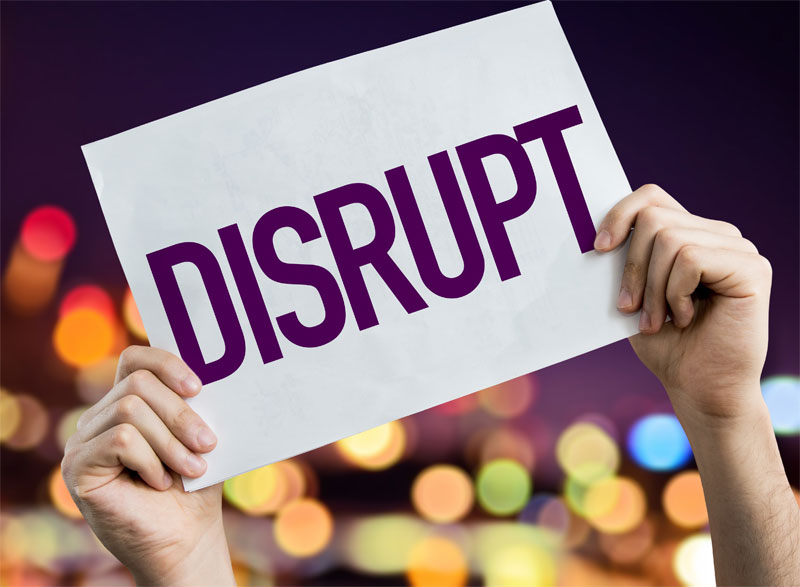We have seen how in a period of days, many companies and governments have instrumentalized remote work models, have trained (through digital platforms) their employees in digital solutions in which they were not used to working in Latin America, have adapted procedures and They have promoted a collaborative digital work mode. This process of change has been carried out with greater agility and success by those companies with a high degree of digitization.
COVID-19 and this pandemic have uncovered the technological transformation needs of many companies, which have seen how their remote work environments were ineffective, their infrastructures could not withstand an increase in traffic or have suffered serious cybersecurity problems. In this way, companies must approach a process that goes beyond transformation, and for this reason we speak of a metamorphosis where a process of accelerated change unfolds of adoption of digital enablers and the implementation of initiatives that maximize flexibility and the creativity of its staff, to have the opportunity to emerge from the crisis in a more successful way.

The growing importance of the macro environment in the Strategy
The COVID-19 pandemic brought a disruption from the macro environment that swept like a tsunami, all the rest of the analyzes that make up the formulation of the strategy and, consequently, also exterminated most of the decisions made, leaving them useless for companies .
In this case; the coronavirus influenced technology, since it caused all companies to go digital; it sank economies in almost unprecedented ways, changed ancient social mores after quarantining the world, and laws had no choice but to adapt to regulate the new world it spawned.
“What is evident today was once imaginary” – William Blake This is a phrase that defines the thinking of those who have vision. The companies that succeed are the nonconformists, those that, even in success, are always looking for new products or services, innovative ways to compete.
Companies that are successful today are getting flatter; alliances become more frequent; technology assumes greater prominence, and processes replace departmental silos.
The situations experienced and resolved during this period have helped us to identify our weaknesses and strengths in a practical way and should stimulate us to think about how we can be more flexible to adapt our processes, channels and work models efficiently thanks to technological solutions to our scope to achieve the least possible impact on our business. Therefore, we have a validated diagnosis as the basis for designing our strategy and it should serve us to become aware that the higher our level of digitization, the greater our speed of adaptation to the new work environment and market that we face.
For many managers, change is scary, but it must be faced, because the result of not changing is even more terrifying for companies.

How to define a digital transformation strategy in times of COVID-19
The COVID-19 outbreak is, above all, a health and human tragedy affecting hundreds of thousands of people, which is having a dramatic impact on the future of the world economy. All companies have been caught off guard, perhaps because their priorities were to meet the day-to-day, the needs of customers and had put aside future strategy and needs as a company. We have unexpectedly and quickly entered a period in which large structural risks are having an intense impact on companies and in which digital has become the center of all interactions, forcing companies to move forward in your technology adoption curve overnight.
Doing things differently is the key, but where in the business do you need to make such adjustments? The advantage will be taken by companies that change the business model and use disruption to offer experiences never seen before. Because creating value does not talk about offering the same thing over and over again, it talks about breaking patterns, turning the rules, imagining, inventing and implementing what perhaps users had never imagined before.
I have always stated in forums that disruptive innovation is not a matter of innovating (only) in product / service, it is above all about innovating in business model. Some representative examples is what Ferra Adrià did, founder of the best restaurant in the world for years (ElBulli), where his success was that they were going to live a unique experience. With his highly innovative “how” (developing new gastronomic technologies) he created dozens of unique dishes that produced extraordinary sensations and experiences (the “what”).
Thus, the success of the Cirque du Soleil was due to the fact that it was a circus that was not a circus. Like the Amazon, Uber or Airbnb models, which answered questions that no one had thought about or implemented before.
“Simplicity is the ultimate sophistication” – Leonardo da Vinci
As I have pointed out; In the world of disruption, it is essential to get out of the comfort zone and achieve continuous questioning in order to offer experiences, products or services that impact in such a way that the consumer begins to establish a transcendental business relationship with your brand.

Source: Impact Hub Academy – Spain
In this sense, I can affirm that the success and achievement of disruption will depend on the ability of the company to evolve its business model with sustainable innovations (generally, incremental) that improve the performance of the product / service, while maintaining focus. In the jump of the high profitability market and once it is consolidated and strengthened, the company will develop a model that is not easy to copy by the competition, it is then that the phenomenon of disruption is consumed. You can see this trend in the previous graph (Innovation matrix).
Examples of disruption have been presented and presented following these patterns that make up the keys to a disruptive innovation strategy, and there is no doubt that they will continue to happen over the years in any industry or market. Some examples of disruptions are that of the Japanese motorcycle manufacturer Honda when entering the American market, the disruptions generated by the smartphone to the PC (with Apple’s iPhone being the pioneer). Big defunct companies like Blockbuster or bankrupt like Kodak suffered the consequences of the disruption caused respectively by Netflix and the digitization of the photographic business model.
The future of the company
The strategy has always focused on ensuring that the company has a competitive advantage – logically, because if it does not achieve it, it disappears – hence it focuses on the essential elements to achieve that advantage, in addition to trying to make it the most sustainable possible or, even better, innovative and, if possible, unique. The core of the strategy has long been to satisfy customers better than competitors, always keeping capabilities in mind.
Undoubtedly a conclusion of this experience will be the need to undertake a profound review of our strategic plans and our capacity to react to any unforeseen event such as this pandemic. In addition to these contingency plans, it would be necessary for business leaders to seek to answer questions such as: Was the technological infrastructure properly prepared? In my digital strategy had I considered risks that have helped me solve the situation? What areas of My business has suffered more from the impact of the situation (due to excess or reduction of workload? Are the digital skills of my staff adequate? Do I have the appropriate technological partners and do I have all the specialized profiles in my staff What do I need? Or do I have a good technological base to tackle automation?
Few organizations are highly successful. And it is that, in addition to strategy, you need a CEO or a general manager with strength and charisma who, by example, leads, motivates, imagines, supports, coordinates and drives, getting the best out of each person, making work as a team, so that the entire organization focuses, with total determination, towards the vision and objectives that the strategy projects.
We must use the learning from this crisis to prioritize the transformation of the company. We must also take advantage of it to increase our resilience, and reinforce the robustness of digitization and process automation.
YOU WANT TO LEAVE YOUR COMMENT HERE
